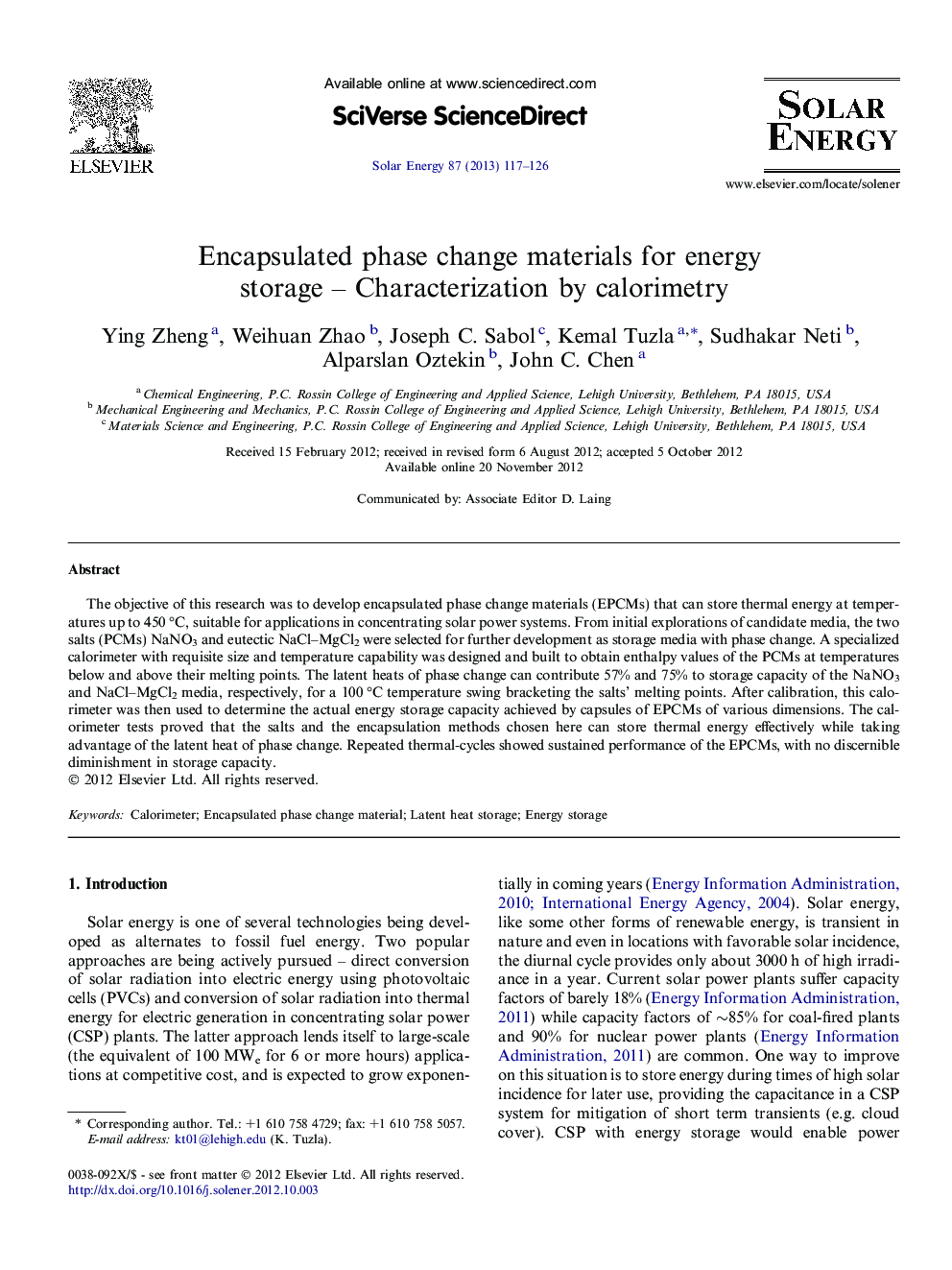| Article ID | Journal | Published Year | Pages | File Type |
|---|---|---|---|---|
| 1550681 | Solar Energy | 2013 | 10 Pages |
The objective of this research was to develop encapsulated phase change materials (EPCMs) that can store thermal energy at temperatures up to 450 °C, suitable for applications in concentrating solar power systems. From initial explorations of candidate media, the two salts (PCMs) NaNO3 and eutectic NaCl–MgCl2 were selected for further development as storage media with phase change. A specialized calorimeter with requisite size and temperature capability was designed and built to obtain enthalpy values of the PCMs at temperatures below and above their melting points. The latent heats of phase change can contribute 57% and 75% to storage capacity of the NaNO3 and NaCl–MgCl2 media, respectively, for a 100 °C temperature swing bracketing the salts’ melting points. After calibration, this calorimeter was then used to determine the actual energy storage capacity achieved by capsules of EPCMs of various dimensions. The calorimeter tests proved that the salts and the encapsulation methods chosen here can store thermal energy effectively while taking advantage of the latent heat of phase change. Repeated thermal-cycles showed sustained performance of the EPCMs, with no discernible diminishment in storage capacity.
► Experimental data for high temperature energy storage during phase change are presented. ► Data for two promising salts which melt at 308 and 448 °C are presented. ► It is shown that latent heat of phase change contributed 50% and 74 % of the stored energy. ► It is shown that these salt candidates can be encapsulated with no observable corrosion problems.
